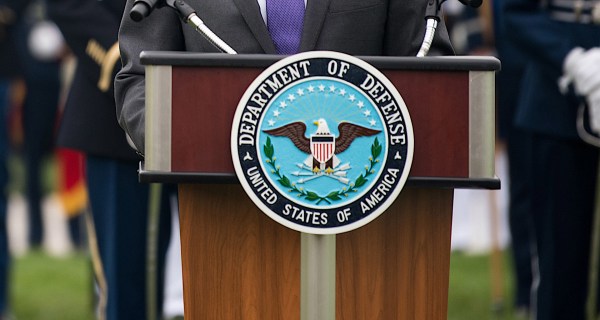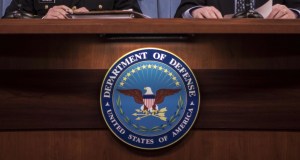 Lt. William Walders works with his team while in South America.
Lt. William Walders works with his team while in South America.Despite subfreezing, record-breaking January temperatures, the Walter Reed Military Medical Center in Bethesda, Md., is hot with activity — buzzing with employees, veterans, their family members, medical staff and visitors.
The simple faces of the buildings look the same as many other government structures; however, there’s more to this campus than meets the eye: The man who in the last two years has worked with his team to bring the base up to pace on the latest health technology.
Lt. William Walders, chief information officer of the organization, manages a budget of just under $100 million, oversees IT operations for 32 hospitals and clinics and 240 staff, but says his job is to get out his employees’ way and give them the tools they need to get the job done.
A sign outside of the office reads, “Business drives IT,” a credo by which Walders tries to lead.
“In two years, I’ve seen drastic change; this campus has changed in the seven years I’ve been coming back and forth to it,” Walders said. “To be able to deliver world-class health care to our patients is huge.”
The base has lately seen a major transformation. In 2011, the Walter Reed Hospital merged with what was the National Naval Medical Center in Bethesda, Md., and Walders dealt with the tail end of that integration.
One of the first projects he took on in the new role was virtualization, or virtual desktop integration.
Walders said when he first got to Walter Reed Bethesda, no one had shared drives or any way to store data because it was all on their computers. That data was at risk to be erased if it wasn’t copied onto CDs, etc., and there wasn’t personal back-up technology.
The pilot for the VDI project has just been completed and Walders said it is scaling quickly. It has the capacity, he said, to grow to 9,000 devices, roughly three-quarters of the desktops at Walter Reed.
Luis Lopez, Walter Reed’s Information Technology Department chief operations officer, worked closely with Walders on several IT projects, including VDI. However, he says one of the greatest accomplishments to come out of the OCIO is upgrading all computers to Windows 7.
In a six-month deadline that saw a government shutdown and continued furloughs, the team updated 10,000 computers; 14,000 including laptops.
Lopez said the update was a major win for IT customers and senior leadership, and also demonstrated Walders’ unique style as CIO.
“He challenges employees, he understand IT from the ground up — the customer side to the back end,” Lopez said. “He’s going to push us to the next level, and be the first to do it.”
Another win was the successful implementation of Wi-Fi throughout the entire campus. Patients have had Wi-Fi at Walter Reed for much longer, but the military network is now wireless.
“Anything we do, we can now do wirelessly: wireless monitoring of our patients, wireless infusion pumps, for example,” Walders said. “We have teams of people looking for wheelchairs all day. Now, with Wi-Fi, we can just put a tag on the wheelchair and locate them.”
There is a large amount of data in military medicine, and Walders plans to tap into that.
“We’ve been collecting massive amounts of data and now we have petabytes of it down in Alabama,” Walders said. “There’s a rich potential to access [the data] and do some advanced data analytics.”
And that’s where big data comes into play at Walter Reed.
Walders listed many initiatives that leverage big data he’s hoping to bring to reality in 2014. One example is giving employees FitBits, UP bands or other types of health bands to monitor their activity level and report it back to officials.
“One of our main missions on base, besides savings lives, is having a ready and fit fighting force,” Walders said. “With these bands, we can track people’s activity levels and intervene if necessary to make sure everyone is on track.”
It can also be used from an electronic health records standpoint. Big data collection can be used to help track employees’ trips to clinics or counselors, and connect the dots back to absenteeism, for example, or legal services. Walders said it may help management know when it may or may not be time for an intervention with an employee.
Walders said these use case examples could be ready to be deployed “any day.”
With such a large staff and budget at his disposal, Walders has established strategies for picking which technologies to invest in, and most of those decisions come right from his team. In a management style that could be described as hands off, Walders encourages his team to make requests for programs, tools or systems they want. There’s a committee especially for this: to determine what types of technologies should be bought into.
“We have people come in and pitch ideas, and the doctors make educated decisions on something we need,” Walders said. “I’m just the IT guy in the room, making sure we can do it and we’re not overstating it.”
Walders has been in the CIO role since March 2012, about as long as the average lifespan of a CIO in the federal government. However, CIOs in the military serve three-year terms, a measure intended to grow diversity in leadership.
“One challenge we have is finding the right fit of an IT worker,” Walders said. “We seem to have high turnover; one person a day would not be an overstatement. It’s about getting the right fit, and I think [the field is] so saturated with people that it’s a big challenge.”
Regarding the role of the CIO in government, Walders said they should in fact have more authority — if they’ve earned it.
“CIOs do need to be empowered,” Walders said. “But it is important that these CIOs are vetted. If they’re going to be empowered, then they need to be capable.”




